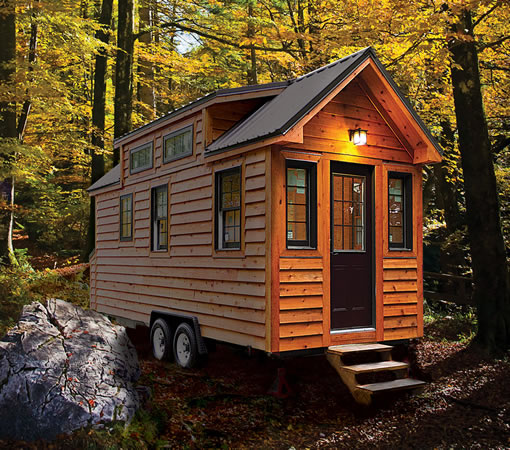Moving to Florida offers a fresh start, with its sandy beaches, warm weather, and vibrant communities eagerly welcoming newcomers. As exciting as it is to start a new chapter in the Sunshine State, ensuring your new home meets all your needs before you move in can make the transition smoother and more enjoyable. Renovating beforehand not only tailors the space to your taste but also helps in addressing any functional improvements, potentially increasing the property’s value. In this article, we’ll walk you through some essential tips for renovating your new home in Florida, setting you up for a great beginning in your new abode.
Assess Structural Changes
First things first, inspect the structural integrity of your new home. This initial step is crucial as it influences the safety and durability of your residence. Look for any signs of foundational damage, roof leaks, or wall cracks. Addressing these issues early on will save you from headaches later and prevent further damage that could be costlier to repair. It’s wise to hire a professional inspector to ensure that all structural aspects meet the local building codes and safety standards.
Plan for the Right Contractors
Once the structural assessments are complete, the next step involves hiring competent contractors. Since renovation projects like wiring, plumbing, or major installations require skilled professionals, selecting the right team is critical. Start by seeking recommendations from neighbors or local real estate agents who are familiar with the area. Make sure to check the credentials and previous work of the contractors to ensure quality and reliability. Clear communication about timelines, costs, and expectations with your chosen contractors will help in achieving the desired results efficiently. For moving items during renovations, consider looking into reputable movers in Florida to handle your belongings with care.
Budget Wisely
Creating a comprehensive budget for your renovation project is vital. Make sure to outline all expected expenses and add a contingency fund for unforeseen costs. Typically, a buffer of 10-20% of the total budget is recommended. This financial planning helps in maintaining control over your expenditures, ensuring that the renovation doesn’t halt midway due to a lack of funds. Be realistic about what you can afford and prioritize projects that add the most value to your home.
Choose a Neutral Color Palette
When it comes to painting, selecting neutral colors can dramatically transform the look of your home without committing to bold, potentially overwhelming schemes. Shades like beige, gray, and whites are versatile and can make your rooms appear larger and more open. These colors also provide a backdrop that allows your furniture and decor to stand out, making personalizing your space easier as you settle in.
Upgrade Flooring
Flooring significantly impacts the aesthetic and functionality of your home. Options such as hardwood, laminate, or luxury vinyl not only enhance the beauty of your home but are also durable and easy to maintain. Consider the climate in Florida—tile flooring can keep your home cooler and is resistant to humidity and sand, which is ideal if you’re close to the beach.
Kitchen and Bathroom Overhaul
The kitchen and bathrooms are high-traffic areas that greatly influence your home’s functionality and appeal. Updating these spaces can provide a return on investment that exceeds the renovation costs. Consider modernizing appliances, fixtures, and countertops to contemporary standards. For bathrooms, water-efficient fixtures like low-flow toilets and showerheads can be both eco-friendly and stylish. In kitchens, open concepts with islands or breakfast bars can modernize the space and make it more sociable.
Maximize Storage Space
Storage is a crucial aspect of maintaining an organized and functional home. Look for ways to maximize every inch of your new space. Built-in shelves, cabinets, and closet organizers can help declutter and optimize storage. For smaller rooms or awkward spaces, consider innovative storage solutions like under-bed drawers or over-door racks. Adding extra storage in the garage, attic, or basement can keep your belongings organized and easily accessible. Custom-built storage systems can also enhance the aesthetics of your home while providing a practical solution for your organization needs.
Improve Lighting Fixtures
Lighting can completely change the ambiance of a room, so don’t overlook the importance of upgrading your fixtures. Natural lighting is ideal, so maximize it by installing larger windows or skylights. For artificial lighting, consider layered lighting—a combination of overhead lights, task lights, and accent lights—for flexibility and a cozy atmosphere. LED fixtures provide energy efficiency and are available in various styles to match your decor. Modern lighting with dimmer switches can also create versatile environments that suit different times of day and activities.
Incorporate Smart Home Technology
With technological advances, integrating smart home features can greatly improve the comfort, security, and efficiency of your new home. A smart thermostat learns your schedule and adjusts the temperature automatically, helping you save on energy costs. Security cameras and doorbell cameras keep you informed about visitors and potential intruders. Automated lighting and blinds can be scheduled to fit your daily routines. Smart locks and smoke detectors enhance safety while offering peace of mind. Investing in these technologies makes your home more convenient and increases its long-term value.
Address Plumbing and Electrical Systems
While often hidden from view, plumbing and electrical systems play a vital role in your home’s functionality. Ensure these systems are up to date and compliant with local building codes before you move in. If you’re remodeling older homes, it’s wise to replace old wiring and plumbing to minimize future disruptions. Efficient plumbing fixtures can also reduce water bills, while updated wiring accommodates modern electronics and appliances. Addressing these systems early prevents inconvenience and ensures your home operates smoothly.
Conclusion
Renovating your new home before moving in sets you up for a comfortable, functional, and personalized living environment. By focusing on key improvements like structural integrity, smart budgeting, and modernizing essential spaces, you’ll ensure a smooth transition into your new residence. Investing time and effort into planning and executing these renovations allows you to settle into your home with peace of mind, knowing it’s tailored to your lifestyle and ready for the new chapter ahead.


